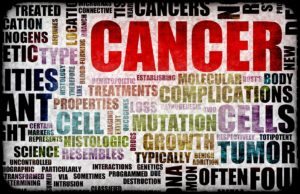Gynaecological cancers refer to cancer of the female reproductive tract. This includes cancer of the uterus (womb), ovaries, cervix, vagina and vulva. Breast cancer is not included, and in Australia, breast cancer is not treated by gynaecological oncologists. Gynaecological cancers overall account for 9% of all reported cancers in women. The majority of gynaecological cancers are diagnosed in females aged 60 and over, however younger women can also be affected.
How common are Gynaecological Cancers in Australia?
On average, 12 women are diagnosed with a gynaecological cancer every day around Australia.
Every year in Australia, almost 5000 women are diagnosed with a gynaecological cancer. The latest Australian data from 2008 reported 4534 new cases of gynaecological cancer in Australia.
Which of the Gynaecological Cancers are most common in Australia?
Uterine cancer is the most commonly diagnosed gynaecological cancer, and in 2008, 2016 women were newly diagnosed with uterine cancer.
The next most common gynaecological cancer is ovarian cancer, with 1272 women diagnosed in 2008. This is followed by cervical cancer, and there were 778 new cases of cervical cancer in Australia in 2008. Vulval cancer was newly diagnosed in 282 Australian women in 2008.
Cancers of other female organ and placenta accounted for 116 new cases, and vaginal cancer was diagnosed in 70 women.
Between 1982 and 2008, the incidence of ovarian and uterine cancers have been rising. In the same period, there has been a fall in the incidence of cervical cancers in Australia, and this may be attributable to the success of the Pap smear cervical screening program in Australia.
Mortality Rate from Gynaecological Cancers
On average, 4 Australian women die from a gynaecological cancer every day.
Gynaecological cancer was responsible for 1502 deaths in Australia in 2007. Of all cancer deaths in Australian females, gynaecological cancers accounted for 9% of all female cancer deaths in Australia in 2007. Gynaecological cancers accounted for 2% of all deaths in females in 2007.
The most common cause of gynaecological cancer deaths in Australia in 2007 was from ovarian cancer, resulting in 848 deaths. Uterine cancer was the next common cause of death, with 338 women dying from uterine cancer in 2007 in Australia. Cervical cancer caused 208 deaths in Australia in 2007.
Between 1982 and 2007, the number of deaths from ovarian and uterine cancer rose. On the other hand, the number of cervical cancer deaths fell over the same period.
Survival Rates for Gynaecological Cancers are Improving
The survival rates for Australian females diagnosed with ovarian, uterine and cervical cancer are better than their counterparts in many other countries and regions.
Between the time period of 1982-1987 to 2006-2010, the 5-year survival rate for ovarian cancer increased significantly from 32% to 43%, for uterine cancer from 75% to 82%, and for cervical cancer from 68% to 71%.
Gynaecological Cancer Symptoms
Symptoms of Gynaecological Cancers vary depending on the type, location and extent of the cancer. Symptoms may include:
- Persistent abnormal vaginal bleeding. This includes bleeding after menopause, or bleeding that is not part of the menstrual periods, or bleeding after sexual intercourse
- Persistent abnormal vaginal discharge
- Pain, pressure or discomfort in the abdomen
- Abdominal swelling
- Change in bowel or bladder habits
- Pain during sexual intercourse
- Itching, burning or soreness
- Lumps, sores or wart-like growths
Risk Factors for Gynaecological Cancers
Having one or more risk factors does not mean that a woman will develop a gynaecological cancer, however it does increase the chance that the woman may be affected some time in her life. Thankfully, many women who have risk factor(s) for gynaecological malignancies never develop a gynaecological cancer. On the other hand, other women who do not have any risk factors may still get a gynaecological cancer.
In general, risk factors for gynaecological cancers include:
- Increasing age
- Family history of gynaecological cancer
- Known genetic mutations (e.g BRCA gene mutation)
- Reproductive history such as child-bearing
- Hormonal exposure, either in the form of medications (e.g. HRT), or hormones naturally produced by the body
- Exposure to diethylstilbestrol (DES) in the womb
- Viral infection such as human papilloma virus (HPV)
- Lifestyle factors such as smoking and excess body weight
Treatment for Gynaecological Cancers
Gynaecological cancers are best treated by a multi-disciplinary team of health professionals dedicated to managing gynaecological malignancies.
Most often, surgery to remove as much of the cancer as possible is the mainstay of treatment for gynaecological cancers. Surgery is also useful to determine the “stage” of the gynaecological cancer. “Cancer Stage” refers to the extent to which the cancer has spread around the body. Some women may benefit from additional (adjuvant) therapies such as chemotherapy, radiotherapy or hormonal therapy.
Dr Amy Tang is an Australian gynaecological oncologist based in Brisbane who is experienced in performing both open and keyhole (laparoscopic) surgery for treatment of gynaecological cancers.
Brisbane Gynaecological Oncologist
Dr Amy Tang specialises in the treatment of cancers of the female reproductive tract. She currently consults and operates at The Wesley Hospital and Greenslopes Private Hospital. For further information about your specific condition, arrange an appointment to discuss your condition with Dr Tang.
Click on the links below to learn more about Gynaecological Cancers
- Ovarian Cancer
- Cervical Cancer
- Uterine (endometrial) Cancer
- Vulval Cancer
- Vaginal Cancer
- Gestational Trophoblastic Disease















